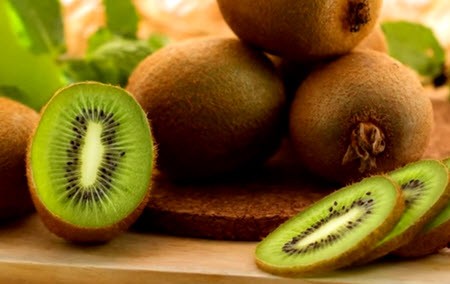Kiwi is one of everyone's favorite fruits and can be purchased in almost all stores. It has an oblong shape and a brown color. However, few people know the history of kiwi. The homeland of this plant is Japan and China. At the beginning of the twentieth century, kiwi had the appearance of a liana-like shrub, which was used for gardening and ornamental purposes. This was the case until this plant came to New Zealand. There, farmer A. Allison set out to turn this climbing plant into a fruit-bearing shrub. This process took several decades, but as a result, at the end of the twentieth century, the world saw familiar fruits, which were given the name kiwi. The plant gave a large harvest of fruits from the fifth year of life.
The fruits were well stored and could withstand long transportation, which allowed them to get to Europe. Europe appreciated the taste of the fruit and it began to be cultivated in the subtropics of the Old World. Kiwis are grown like grapes on special supports. Caring for it includes regular pruning of the plant in the autumn and spring periods. Kiwi fruits are spherical in shape with bright green flesh and many black seeds.
Content
What is included in kiwi?
The weight of one fruit is about 150-180 grams and contains the daily norm of vitamin C, which is necessary for humans. It also contains a fairly large amount of sugar, fiber, folic acid, organic acids, phosphorus, pectins, flavonoids and vitamins of groups A, D, E, B2, B6 and B1. Kiwi is also rich in macronutrients iron, plant enzymes (actinidin), magnesium and potassium.
Useful properties of kiwi
A large amount of vitamins and trace elements in kiwi helps to strengthen the stability of the nervous system, accelerates protein metabolism in the body and improves metabolism. Also, to the beneficial properties of the fruit, it can be added that its use reduces the possibility of developing hypertension and heart failure, and also strengthens the cardiovascular system as a whole. Scientific studies have shown that the use of kiwi reduces the risk of cancer. Trace elements contained in it in large quantities help to reduce cholesterol, strengthen the walls of blood vessels and microcapillaries, which reduces the likelihood of atherosclerosis and blood thrombosis.
Kiwi helps to strengthen the immune system, improves the functioning of the stomach and intestines, removes salts from the body and has a beneficial effect on the kidneys. Many athletes use this fruit to restore strength after overload.
Kiwi in cooking
Kiwi is used to cook various dishes. It makes excellent sauces, it harmonizes well with fish, white meat and seafood. Also, this fruit is a great decoration for ice cream, desserts and cakes.
For overweight people, nutritionists advise kiwi as a good fat burner, and the fiber contained in it in sufficient quantities will help you cleanse the body of excess toxins. However, do not forget that kiwi can cause an allergic reaction.
Kiwi peel also has beneficial properties. It is used as a cosmetic product to tone and tighten the skin.
Kiwi fruits always come to us the freshest from California and New Zealand.

